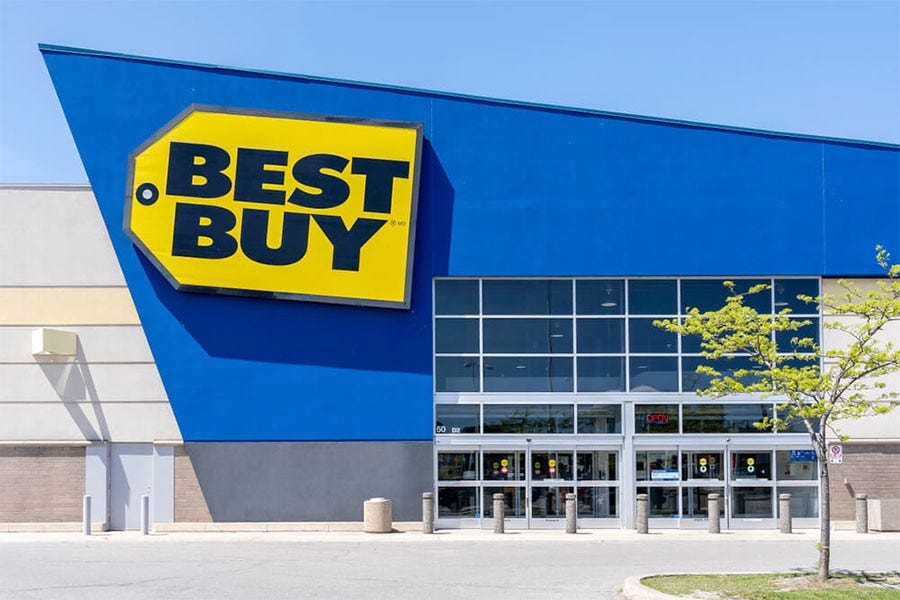Heart of Business: The Best Buy Turnaround Story
TFTLR Special Edition: The Heart of Business: Leadership Principles for the Next Era of Capitalism Summary
Welcome back to TFTLR! In the spirit of sharing long-term mental models, I wanted to try a special edition today of summarizing a book that was incredibly influential for me.
This edition covers The Heart of Business: Leadership Principles for the Next Era of Capitalism by Hubert Joly, who successfully 5x’d Best Buy as CEO from the brink in 2012 to thriving in 2019. The book is loaded with a number of incredible frameworks for growing, operating, and leading businesses.
I also posted this article to Medium, with a hope of making a database of great book summaries that are easily referenceable. Let me know your thoughts!
The Heart of Business: Leadership Principles for the Next Era of Capitalism Summary
In 2012, Best Buy was in deep secular decline, facing e-commerce competition principally from Amazon as well as brick and mortar competition from the major brands. Competitor Circuit City had recently declared bankruptcy, and analysts were projecting the fall of Best Buy.
Hubert Joly was brought on as CEO after time running Vivendi’s gaming division and EDS in France and transformed the turnaround and leadership playbook. Rather than the standard turnaround framework of closing 30–40% of the business, mass layoffs outside of the core business, and squeezing suppliers, he created a growth-oriented strategy.
Joly believe that work is not a burden to be endured but a search for meaning and fulfillment. He believes that a company and each individual should identify their purpose at the intersection of four things:
What they love
What they’re good at
What the world needs
What they can get paid for
Even a stonemason can either view their job as cutting stones or building cathedrals. For this reason, he asks every one of his direct reports what drives them and what their dreams are, and then he works with them to chart a course. The best Best Buy store managers do the same exercise with their employees.
He also doesn’t believe in perfection, which is static and impossible. Vulnerabilities are how social connections are formed, and he borrowed from Ford’s Alan Mullaly’s green light, yellow light, and red light exercise to get people to share their challenges — celebrating when they did and inviting others to help one another. This same principle applies to failure- failure on established business functions like setting up a warehouse is not viewed favorably, but reversible failures in the pursuit of innovation are celebrated.
Joly eschews Milton Friedman’s gospel of maximizing shareholder value over all else, citing that this form of thinking leads to short-term thinking and is not energizing for employees and customers. Instead, he borrows from Jean-Marie Descarpentries of Honeywell Bull’s belief that companies have three imperatives
Development and fulfillment of people, which leads to
Customer loyalty, which ultimately leads
Profits
To do this well, a company needs a noble purpose- a North Star that employees can rally around and customers can empathize with. Best Buy used the 4-part purpose framework above to align on “enriching customers’ lives through technology.” This informed their strategy and helped them focus on blue ocean opportunities like home healthcare instead of narrowly looking at competitors. Best Buy made this tangible by explaining their business as an “inspiring friend” who helps customers understand how products can help them.
Best Buy’s people-first strategy also applies to suppliers and even competitors. Instead of competing with Samsung, Apple, and even Amazon- they created mini stores within Best Buy to showcase the technology for each.
On turnaround strategy, Joly had a framework of
Always start with the people,
Always end with the people, and
Generate human energy.
Starting with the people involved learning from frontline employees and watching customers as well as hiring a great team. Ending with the people involved growing revenue first, cutting non-salary expenses second, and only then cutting jobs. Finally generating human energy means coming up with a good plan fast, focusing everyone on clear, simple priorities, and making the environment positive, intense, transparent, and safe. (It should feel like an electrifying team challenge)
Joly believes that financial incentives don’t motivate people (research has shown reward size is inversely proportional to cognitive skill performance). They are good for setting priorities; however, so incorporating 1) a People component (e.g. turnover), 2) a Customer component (e.g. retention), and 3) a Financial component (profit) is important.
People are fundamentally motivated by 5 factors:
Connecting their individual search for meaning with the company’s noble purpose: Creating personal investment
Developing authentic human connections at work: This is built on trust and vulnerability
Fostering autonomy: Pushing decision-making down using RASCI for agile decision-making
Growing mastery: Replacing annual performance reviews with quarterly conversations led by employees on their goals, progress, and development
Nurturing in a growth-mindset environment: Stop blaming “headwinds” and start carving pathways through obstacles
On leadership, CEOs and executives aren’t superheroes that know everything or are born leaders. They grow through deciding what kind of leader they want to be and working on it.
Joly has 5 leadership recommendations- the “Five Be’s”:
Be clear about your purpose, the purpose of the people around you, and how those connect with the purpose of the company.
Be clear about your role as a leader (for Joly, creating energy, inspiration, and hope)
Be clear about whom you serve (servant leadership).
Be driven by values (write them down, live by them, and make them the fabric of the company)
Be authentic (vulnerability is at the heart of social connection).




